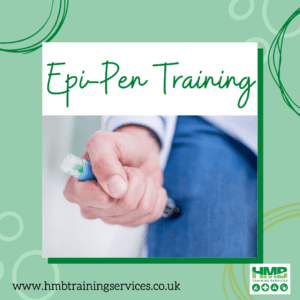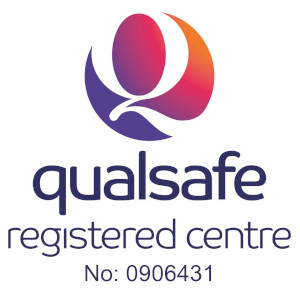Anaphylactic shock is very common, and knowing the quick response to treat anaphylaxis shock can save lives. Peanut and tree nut allergies are common – they are the most commonly known foods to cause anaphylaxis. About 1 in 50 children and 1 in 200 adults in the UK have a nut allergy.
Anaphylaxis, a severe allergic reaction, can occur suddenly and escalate rapidly, posing life-threatening risks if not promptly addressed. We will explain the causes, symptoms, and most importantly, the swift actions needed to effectively manage anaphylaxis and potentially save lives. Whether you’re a healthcare professional, someone with allergies, or a concerned bystander, understanding anaphylactic shock and how to respond can make all the difference in an emergency.
Understanding Anaphylactic Shock: What are the Triggers
Anaphylactic Shock: Recognising Signs
Anaphylactic shock is a severe allergic reaction that demands immediate attention. Whether you’re someone with known allergies or a caregiver to someone who is, being able to recognize the signs of anaphylaxis is crucial. Prompt recognition allows for swift action, potentially saving lives.
Common Signs and Symptoms
Anaphylactic shock can manifest differently in individuals, but there are some common signs and symptoms to be aware of:
- Skin Reactions: Itching, hives (urticaria), and flushing of the skin are often early indicators of an allergic reaction. The skin may become red and swollen.
- Respiratory Symptoms: Difficulty breathing, wheezing, shortness of breath, and chest tightness are hallmark signs of anaphylaxis. In severe cases, the airways can become constricted, leading to respiratory distress.
- Gastrointestinal Issues: Nausea, vomiting, abdominal pain, and diarrhoea may occur during an anaphylactic reaction, as the body’s immune system responds to the allergen.
- Cardiovascular Changes: Rapid heartbeat (tachycardia), low blood pressure (hypotension), dizziness, and fainting are serious signs that anaphylaxis is progressing. These indicate that the body’s circulation is being affected, potentially leading to shock.
- Swelling: Swelling of the face, lips, tongue, throat, or other parts of the body, known as angioedema, is a concerning symptom of anaphylaxis. This swelling can impede breathing and must be addressed urgently.
Anaphylaxis Awareness: Quick Response to Treat Anaphylaxis Shock
Anaphylactic shock is a severe allergic reaction that requires immediate medical attention. While waiting for professional help to arrive, there are crucial steps you can take to assist someone experiencing anaphylaxis.
1. Assess the Situation
- Stay calm and assess the person’s condition. Look for signs and symptoms of anaphylactic shock, including difficulty breathing, swelling, rash, and a rapid or weak pulse.
2. Call Emergency Services
- Dial emergency services – 999 immediately. Anaphylaxis is a medical emergency that requires urgent attention.
3. Administer Epinephrine – Auto-injector
- If the person carries an epinephrine auto-injector (such as an EpiPen), help them use it according to the manufacturer’s instructions. Inject the epinephrine into the outer thigh muscle and hold it in place for several seconds. Encourage the person to lie down and rest, as epinephrine may cause dizziness or palpitations.
4. Assist with Medication
- If the person has other prescribed medications for anaphylaxis (such as antihistamines), help them take these as directed. However, epinephrine is the first-line treatment for anaphylactic shock and should be administered promptly.
5. Monitor Vital Signs
- Keep the person lying down on their back with their legs elevated if possible. Monitor their breathing, pulse, and level of consciousness while waiting for emergency responders to arrive. Be prepared to perform CPR if the person becomes unresponsive and stops breathing.
6. Provide Comfort and Reassurance
- Stay with the person and provide reassurance. Encourage them to remain calm and try to keep them comfortable while awaiting medical assistance.
7. Be Prepared for Further Treatment
- When emergency responders arrive, provide them with information about the situation and any treatments that have been administered. Be prepared to accompany the person to the hospital for further evaluation and treatment.
Remember:
- Anaphylaxis can progress rapidly, so it’s essential to act quickly and decisively.
- Even if the person starts to feel better after receiving epinephrine, they still need medical evaluation to ensure they are stable and to prevent a possible secondary reaction.
- Proper training in first aid and anaphylaxis management can help you respond effectively in emergency situations.
By following these first aid steps, you can help support someone experiencing anaphylactic shock until professional medical help arrives. Always prioritize safety and seek immediate assistance for severe allergic reactions.
How to Administer an Auto-Injector
Using an EpiPen correctly is crucial during anaphylactic shock. Here’s a step-by-step guide:
1. Prepare the EpiPen:
- Remove the EpiPen from its carrying case.
- Hold the EpiPen firmly with the orange tip pointing downwards. Do not touch the orange tip, as it contains the needle.
- Remove the blue safety cap by pulling it straight off. Do not bend or twist it.
2. Position the EpiPen:
- Hold the EpiPen with your dominant hand, like you would hold a pen or a dart.
- With your non-dominant hand, firmly grasp the outer thigh of the person receiving the injection. The injection should be administered into the outer thigh muscle.
- Keep the thigh steady and avoid injecting into a vein or buttock. Look out for seams.
3. Administer the Injection:
- Swing and jab: Swing the EpiPen firmly into the thigh at a 90-degree angle. The orange tip should make contact with the thigh and inject the needle automatically. The injection can be administered through clothing if necessary.
- Hold in place: Once the needle is injected, hold the EpiPen firmly in place for several seconds (typically 3 to 10 seconds) to ensure the full dose of medication is delivered.
4. Dispose of the EpiPen:
- After use, the EpiPen will have a visible needle and may contain some medication residue. Safely dispose of the used EpiPen according to local regulations and guidelines. Some areas allow for disposal in household trash, while others may require special disposal methods.
5. Seek Emergency Medical Attention:
- Even after administering epinephrine, it’s crucial to seek emergency medical assistance immediately. Anaphylaxis requires professional medical evaluation and ongoing treatment to prevent further complications or relapse.
Remember, proper training and familiarization with using an EpiPen are essential for effective administration during an allergic emergency. If you or someone you know is at risk of anaphylaxis, consult with a healthcare professional for guidance on using an EpiPen and managing severe
Overview – Quick Response to Treat Anaphylaxis Shock
In the face of anaphylactic shock, swift action can be the difference between life and death. Through this comprehensive blog, we’ve explored the critical importance of recognising the signs of anaphylaxis and responding quickly and effectively to treat it.
From understanding the triggers of anaphylactic shock to learning how to administer life-saving medication like epinephrine using an EpiPen, we’ve equipped ourselves with valuable knowledge and skills to address this medical emergency with confidence and competence.
But our journey doesn’t end here. Anaphylaxis awareness is an ongoing commitment to preparedness, communication, and advocacy. Whether you’re someone with allergies, a caregiver, a healthcare professional, or simply a concerned bystander, your role in anaphylaxis management is crucial.
By staying informed, staying prepared, and staying vigilant, we can all play a part in creating safer environments and saving lives. Together, let’s continue to raise awareness, foster understanding, and empower action in the face of anaphylactic shock.
Anaphylactic Training: Our Courses:
On any of our first aid courses you will learn how to help someone who is having an anaphylactic shock.
Our Emergency and First Aid at Work courses are for those working in an office, factory, warehouse, manufacturing or on a building site. These courses will set you up to know exactly what to do in an emergency. Completing our courses will help you understand the hazards and risks in your workplace to therefore prevent accidents.
Apprentices or staff who are unlikely to be left alone with children, and lunchtime supervisors are all candidates for our Emergency Paediatric First Aid Training. Our one-day course includes roles and responsibilities of a first aider, first aid kits, accident reporting, reasons of a life-threatening condition, CPR, defibrillator, causes of unconsciousness and recovery position, choking, bleeding, burns, and minor injuries.
Our Paediatric First Aid Training 2-day course includes all elements of the one-day first course including; broken bones, spinal injuries, head injuries, slings, sprains and strains, diabetes, febrile convulsions, hypothermia, hyperthermia, epilepsy, poisons, eye injuries, allergies and anaphylaxis, and asthma.
This course is ideal for those working alone with children, whether you are a Teacher or Teaching Assistant working in the Early Years or a childminder. Our Paediatric courses are fully accredited. We have open courses running at our Brownhills Centre or we can come to your setting.
Our courses provide you with the peace of mind that you’ll know what to do in the event of an emergency, such as illnesses like anaphylactic shock. Furthermore, getting first aid training will give you the skill set of knowing exactly what to do if your child, friend, or work colleague suffers from an injury or life threatening condition. Never put yourself in a situation where you’re thinking, “What if I knew what to do?” Get First Aid Trained Today! Know the quick response to treat anaphylaxis shock.
Call us on 01543 453338 or email us on info@hmbtrainingservices.co.uk




